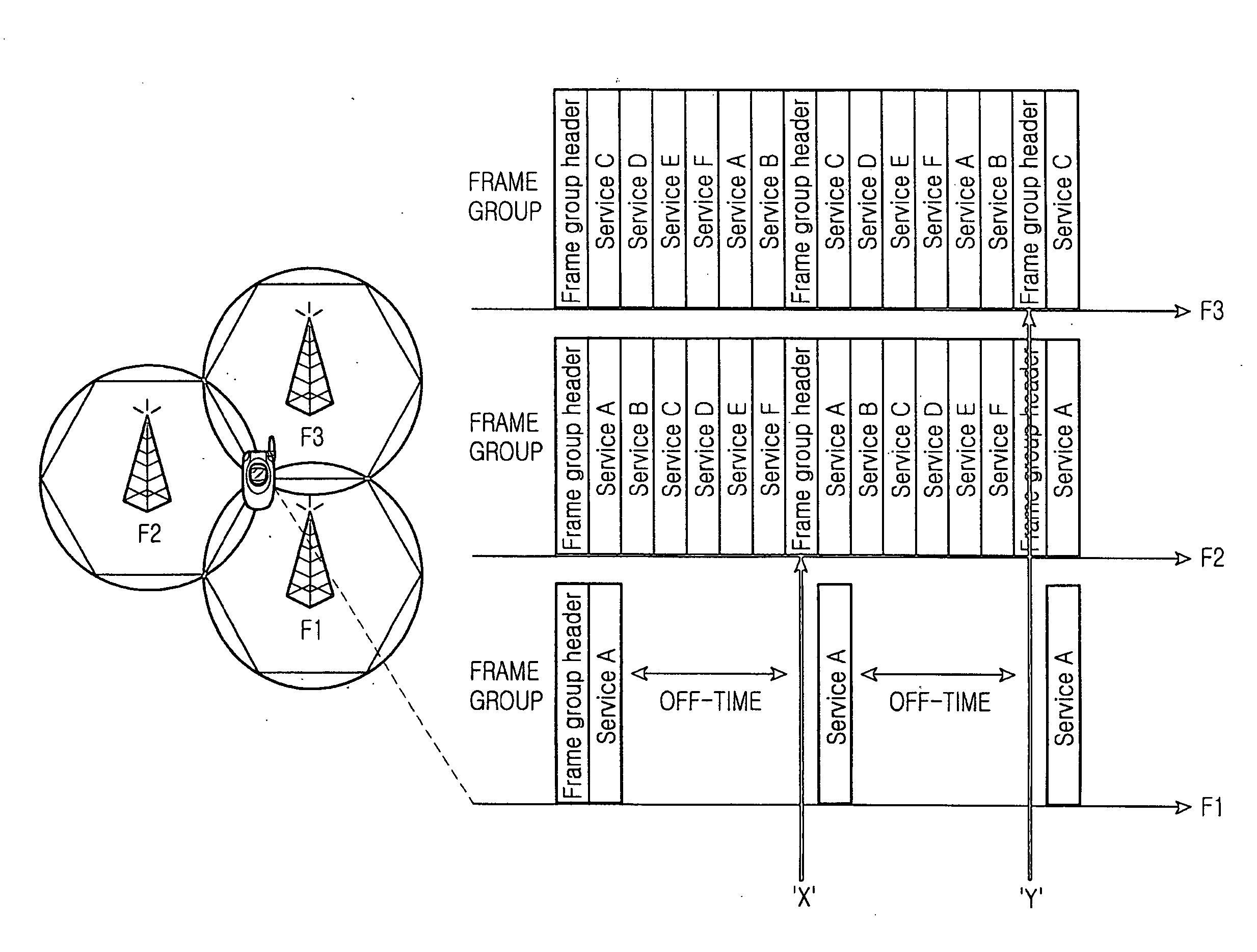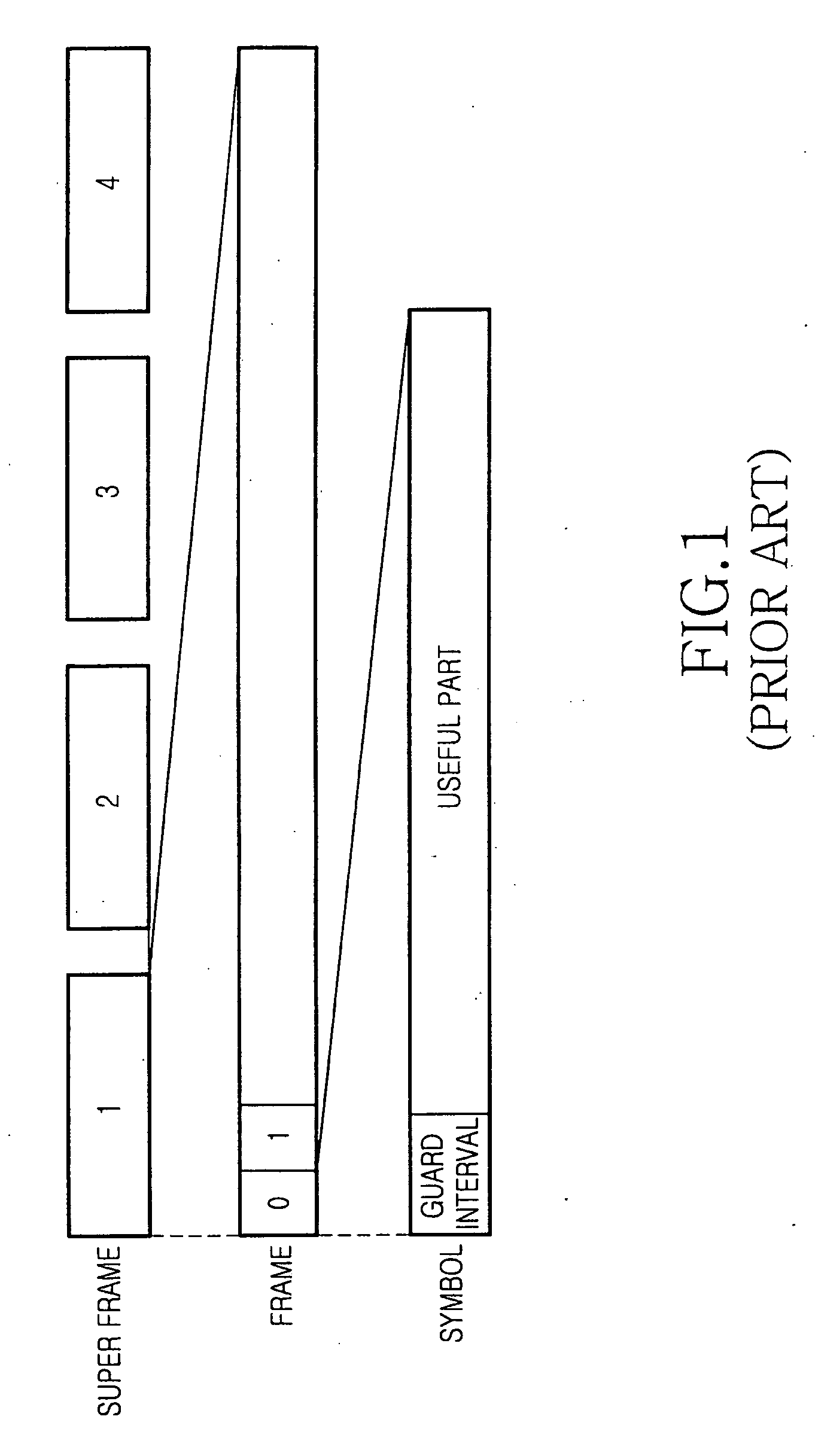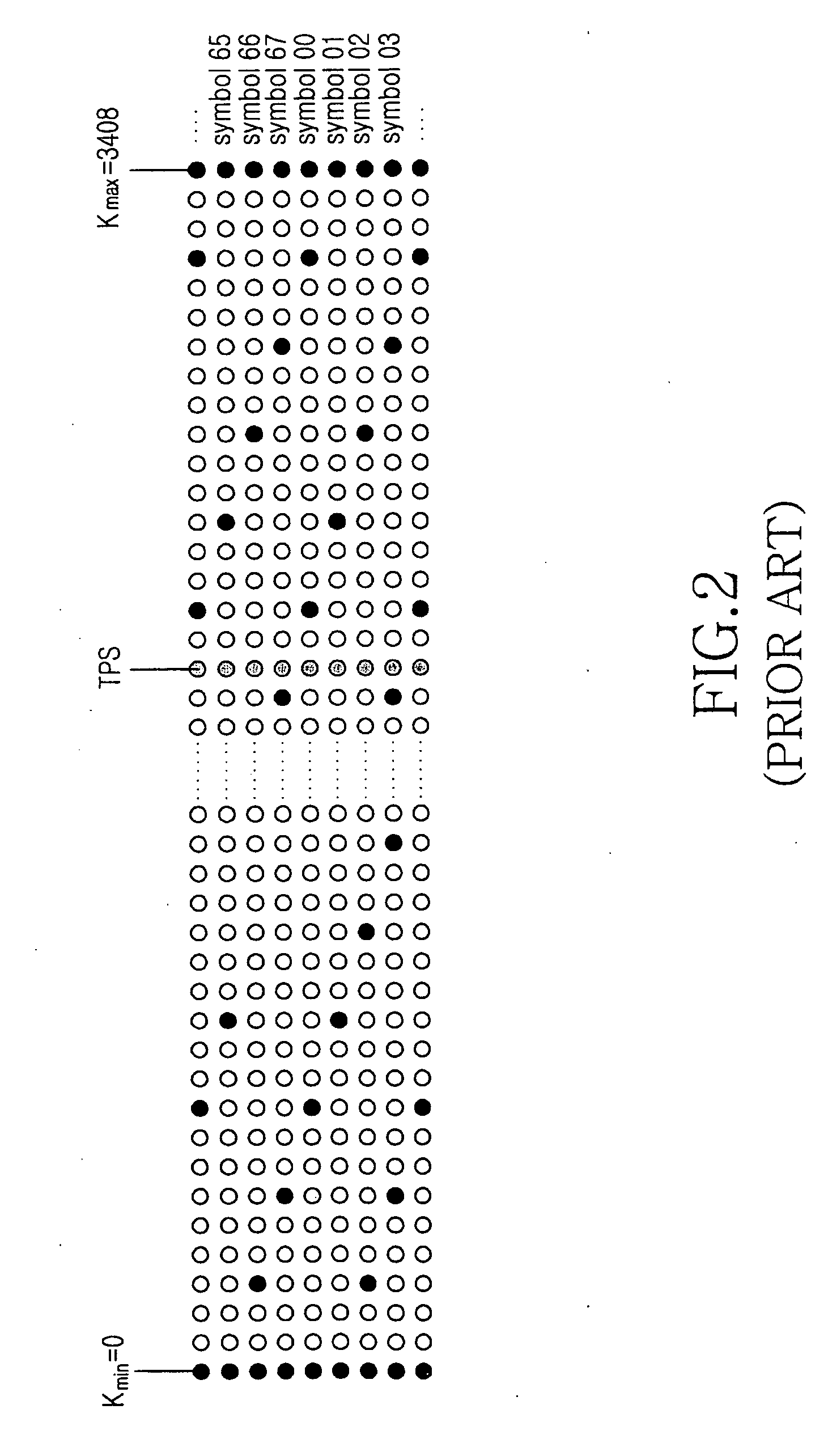Apparatus and method for transmitting and receiving broadcasting in a digital multimedia broadcasting system
a multimedia broadcasting and digital multimedia technology, applied in the field of digital multimedia broadcasting system, can solve the problems of increasing the cost of the receiver, service interruption, and light weight and less power consumption of the portable device, and achieve the effect of reducing power consumption and smooth and seamless handover
- Summary
- Abstract
- Description
- Claims
- Application Information
AI Technical Summary
Benefits of technology
Problems solved by technology
Method used
Image
Examples
embodiment 1
[0136]FIG. 18 illustrates frame slicing according to a first embodiment of the present invention.
[0137] Referring to FIG. 18, a frame group includes one frame group header and a plurality of signal frames, each signal frame carrying a broadcast signal from an allocated service. The frame group header contains information identifying services included in this frame group and the relative start time of each service, as illustrated in Table 5. Also, within each service burst of a service, the relative time to the beginning of the next burst of the service (Δt) is indicated.
TABLE 5ServiceRelative start timeAt1_ABt1_BCt1_C. . .. . .
[0138]FIG. 19 is a flowchart illustrating an operation for receiving an intended service in a terminal according to the first embodiment of the present invention.
[0139] It is noted that while a TPS check is described in detail in the flowchart, the TPS check step may not be provided by user selection.
[0140] Referring to FIG. 19, when starting service rece...
embodiment 2
[0147] A frame group header carries service burst information about an N frame group, so that there is no need for receiving every frame group header to find a desired service.
[0148]FIG. 20 illustrates frame slicing according to another embodiment of the present invention.
[0149] Referring to FIG. 20, a frame group includes a frame group header and a plurality of signal frames, each signal frame having a broadcast signal from a service allocated to the signal frame.
[0150] In the illustrated case of FIG. 20, the terminal turns on its receiving circuit at a start time and intends to receive service B. The terminal receives frame group header 1 and acquires information about n frame groups from frame group header 1. The terminal then receives a service B burst by staying active only for the transmission period of service B. Thereafter, the terminal stays inactive until frame group header (n+1) arrives. The terminal acquires information about another n frame groups from frame group he...
embodiment 3
[0162] Each frame group header includes the service information of the following N frame groups and the relative start time of each service in the N frame groups. In addition, Δt is indicated within each burst. Therefore, the terminal can receive a desired service without monitoring a frame group header after every N frame groups.
[0163]FIG. 22 illustrates frame slicing according to a third embodiment of the present invention.
[0164] Referring to FIG. 22, a frame group includes a frame group header and a plurality of signal frames, each signal frame having a broadcast signal from a service allocated to the signal frame. The frame group header carries information identifying the services included in n frame groups and information indicating the relative start time of each service. In addition, the time to the beginning of the next burst, Δt, is indicated within each signal frame (i.e. each service burst).
[0165] In the illustrated case of FIG. 22, the terminal turns on its receiving ...
PUM
 Login to View More
Login to View More Abstract
Description
Claims
Application Information
 Login to View More
Login to View More - R&D
- Intellectual Property
- Life Sciences
- Materials
- Tech Scout
- Unparalleled Data Quality
- Higher Quality Content
- 60% Fewer Hallucinations
Browse by: Latest US Patents, China's latest patents, Technical Efficacy Thesaurus, Application Domain, Technology Topic, Popular Technical Reports.
© 2025 PatSnap. All rights reserved.Legal|Privacy policy|Modern Slavery Act Transparency Statement|Sitemap|About US| Contact US: help@patsnap.com



